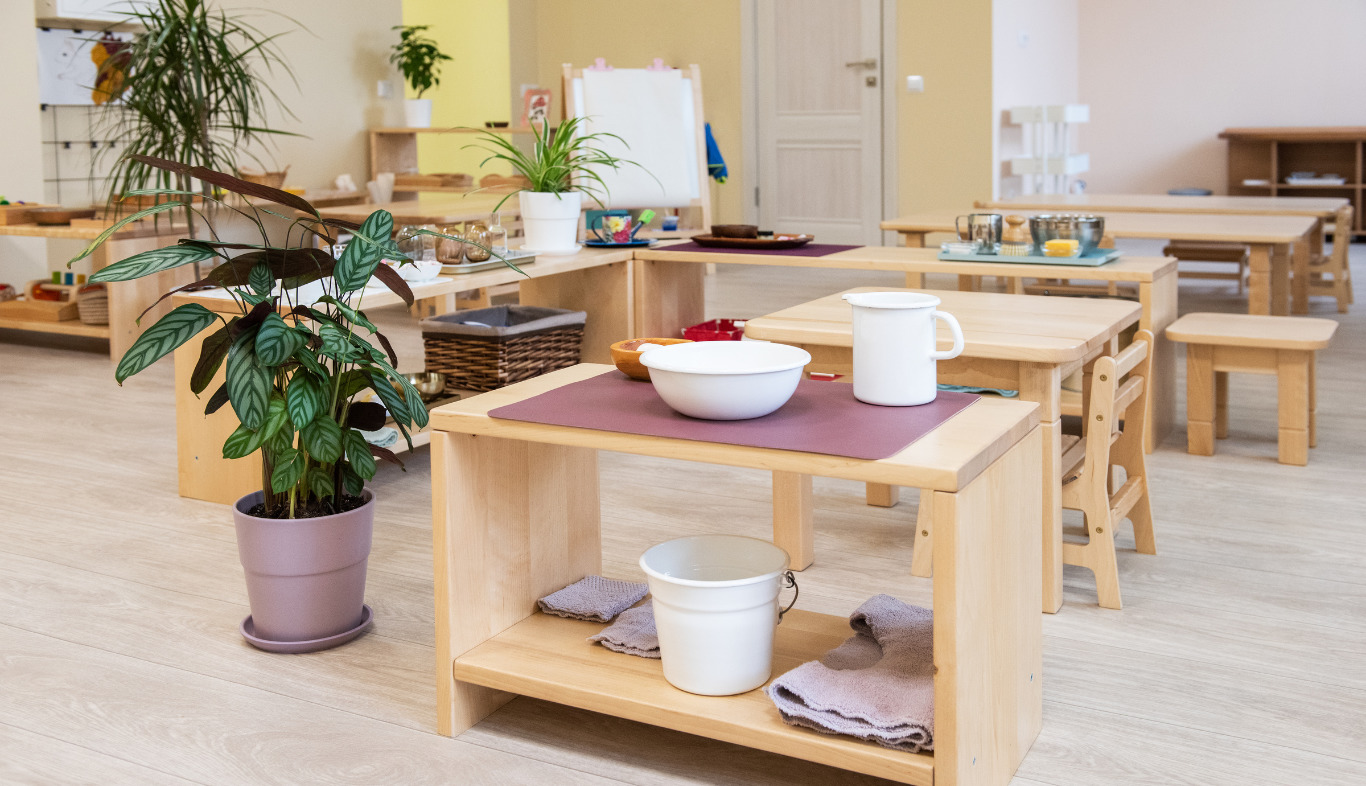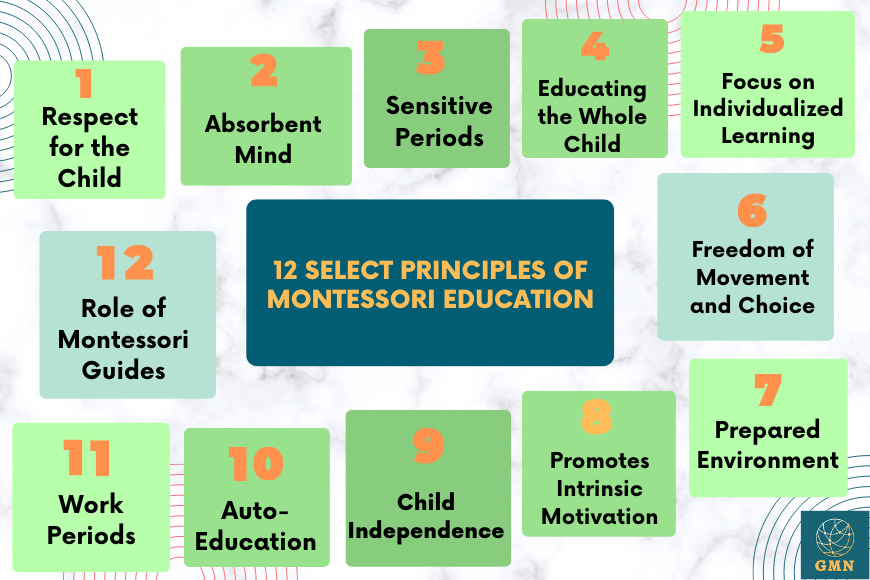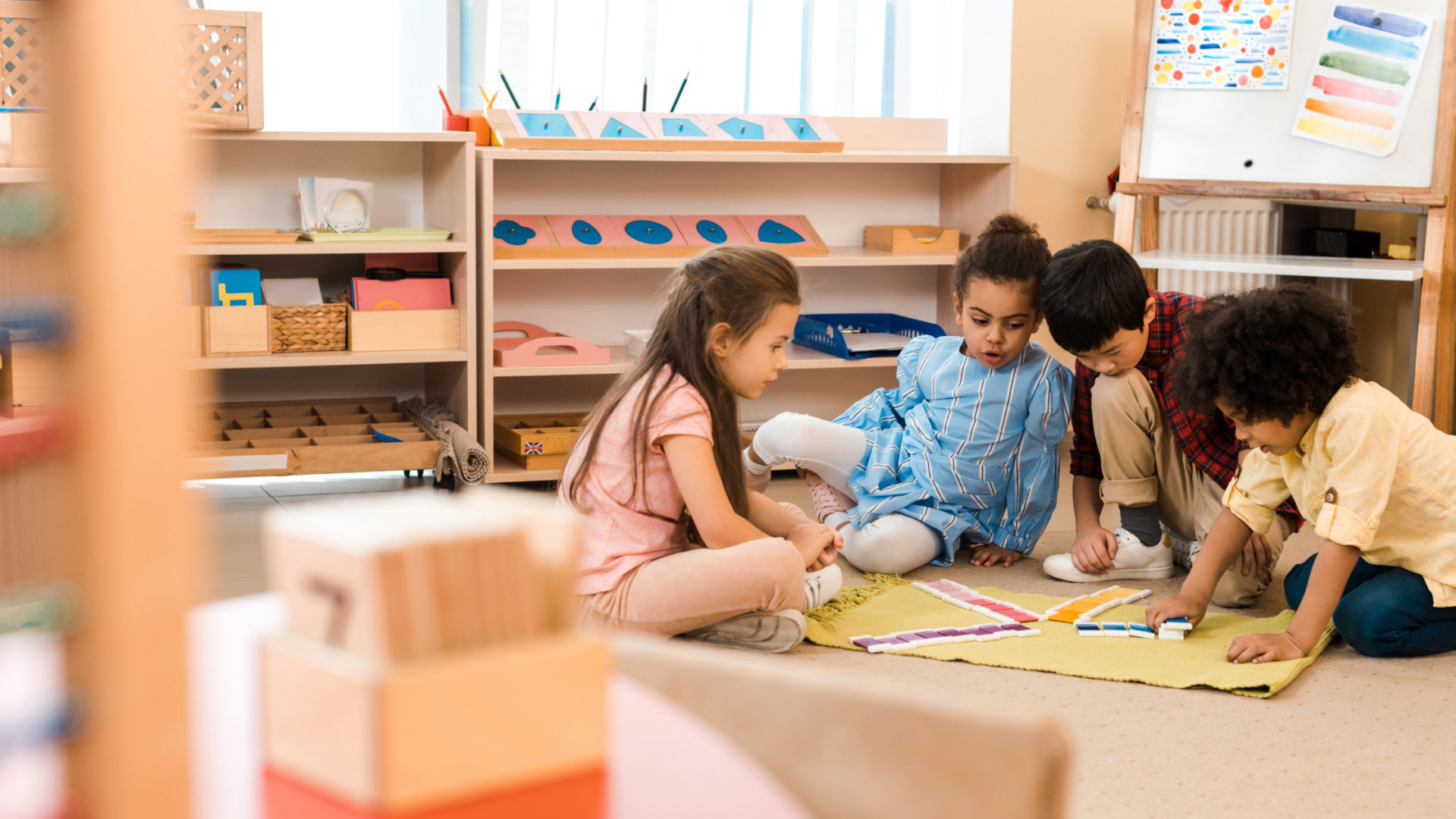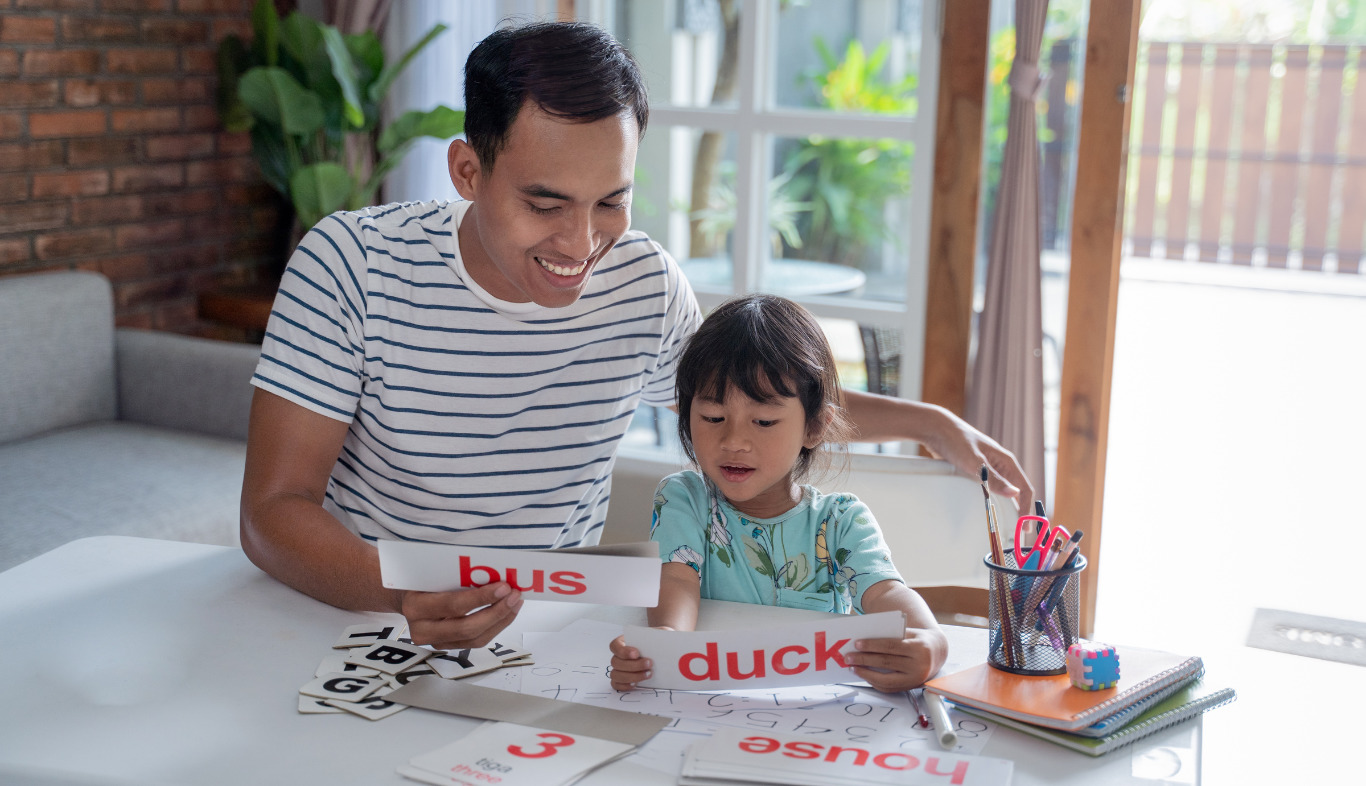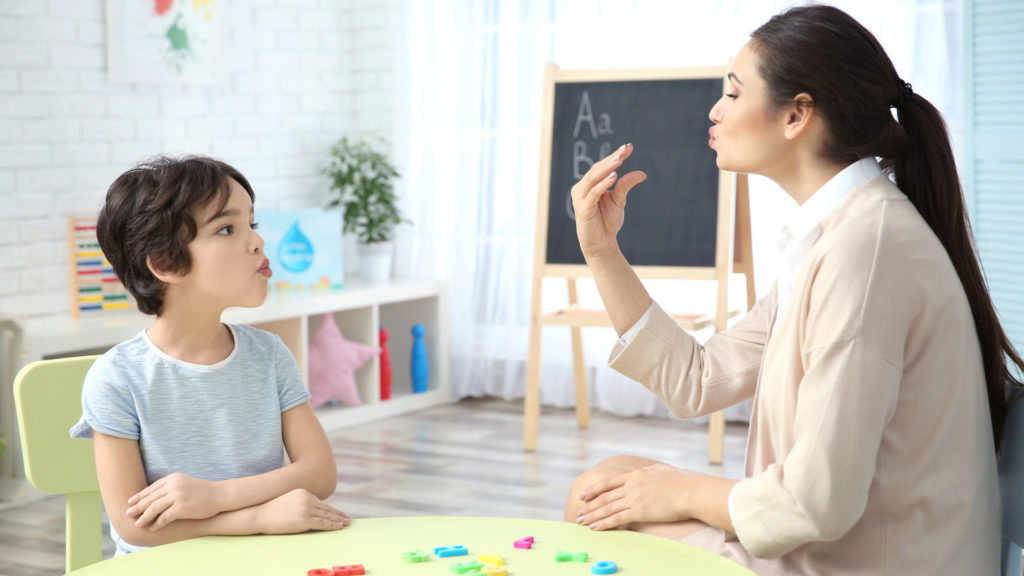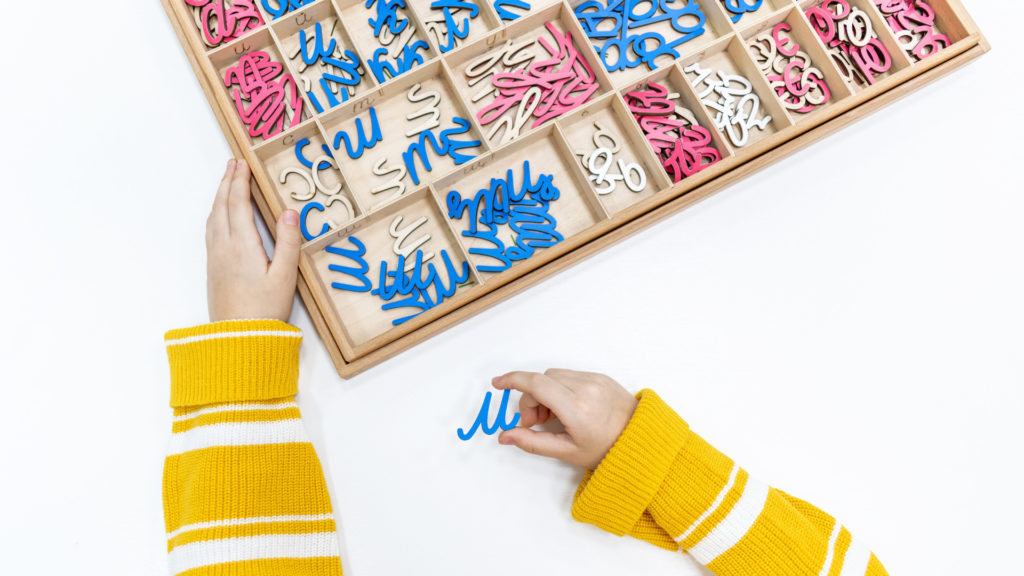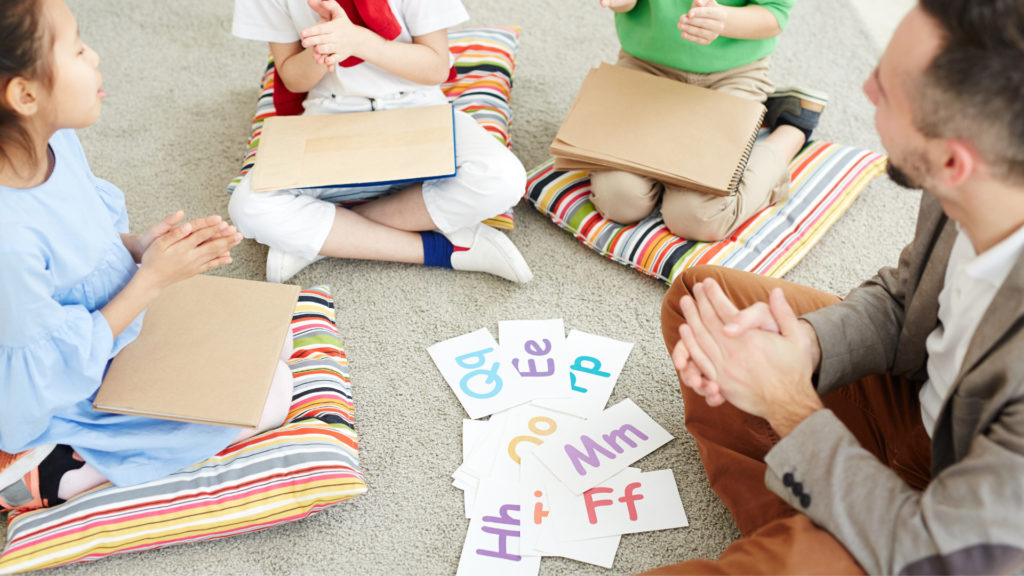The Montessori method of education was developed by Dr. Maria Montessori through an iterative process of experimentation and observation. The principles of her method are based on the idea that children can learn through self-directed exploration.
The Montessori method emphasizes the importance of a child’s social and emotional development, independence, creativity, and freedom within an educational environment. Let us learn about 12 select principles of Montessori education.
Principle #1: Respect for the Child
Dr. Maria Montessori believed that every child is unique. Some children work best with more freedom, some need to be told what to do, and some may not respond well to any form of control. Therefore, Montessori schools are rooted in a deep respect for the uniqueness of every child. Children have the freedom to choose, make mistakes, and learn at their own pace.
Principle #2: Children have an “Absorbent Mind”
Through years of observation and research, Dr. Maria Montessori determined that early age development (0 to 6 years) is crucial as a child learns by observation. She termed this stage of development as the “absorbent mind” because during this stage a child has a sponge-like capacity to absorb information from their environment.
“At some given moment, it happens that the child becomes deeply interested in a piece of work; we see it in the expression on his face, his intense concentration, the devotion to the exercise.” — Dr. Maria Montessori in The Discovery of the Child.
Children can use their own judgment and work in a self-directed manner, which is what allows them to grow into independent thinkers. Thus, it is important to develop a sense of their culture and lay the foundations of their learning, intelligence, and personality.
Principle #3: Sensitive Periods
Dr. Maria Montessori observed a child passes through a phase of development to learn specific skills and knowledge areas. She termed this phase as a sensitive period (a phase of development in which children are highly motivated to learn). Sensitive periods are characterized by intensity, repetition, and commitment.
Principle #4: Educating the Whole Child
‘Educating the Whole Child‘ refers to the process of educating all the child’s senses in order to build awareness and understanding.
The Montessori method of education therefore focuses on nurturing each child’s potential by providing a developmentally appropriate learning environment that supports their intellectual, physical, emotional, and social growth.
The school environment is designed with children in mind, so it has many different stimuli for them to learn from. The Montessori curriculum covers all aspects of development, such as practical life, sensorial, cultural, language, mathematics, geography, and science.
Principle #5: Focus on Individualized Learning
Montessori education places an emphasis on the idea that children are capable of handling their own learning. Therefore, the Montessori school places children with peers of varying ages, abilities, development needs, and levels of achievement in a common classroom.
“The fundamental help in development, especially with little children of 3 years of age, is not to interfere. Interference stops the activity and stops concentration.” — Dr. Maria Montessori in The Child, Society, and the World: Unpublished Speeches and Writings.
Children are encouraged to carry out activities based on their individual developmental needs, while educators keep track of their progress based on observation. Thus, making learning active, individualized, self-correcting, and tailored to the needs and interests of each individual child.
Principle #6: Freedom of Movement and Choice
The Montessori method of education is based on the belief that children are capable of self-learning and should be given the opportunity to develop their intellectual, physical, social, and emotional capacities through self-directed exploration.
In Montessori learning environments, children are free to move around at will and choose from a variety of activities, while educators act as facilitators in the background, providing guidance when necessary. The curriculum is planned in advance and is prepared so that children can learn best and discover learning outcomes through hands-on experience.
Principle #7: Prepared Environment
Maria Montessori observed that children learn better in an environment that is organized to support their learning and interests. This was termed a prepared environment.
“Children acquire knowledge through experience in the environment.” — Dr. Maria Montessori in The 1946 London Lectures.
In a prepared environment, children are free to follow their interests, choose their work, and progress at their own pace within this space.
Principle #8: Promotes Intrinsic Motivation
The Montessori classroom is prepared in such a way that promotes intrinsic motivation and self-regulation. Children are given the freedom to progress at their own pace, which creates a sense of autonomy by providing them with the opportunity to follow their interests.
Intrinsic motivation is the desire to learn within each child and themselves. It is an individual and individualistic type of motivation.
There are no gold stars or extrinsic rewards for children’s learning in a Montessori classroom. Completing an activity and learning how to do it themselves gives children a sense of accomplishment, an intrinsic reward.
Principle #9: Child Independence
The Montessori classroom promotes independence through a hands-on approach. Children are encouraged to work individually and in groups. It allows them to develop self-regulation and leadership skills.
“The child’s development follows a path of successive stages of independence, and our knowledge of this must guide us in our behavior towards him. We have to help the child to act, will, and think for himself. This is the art of serving the spirit, an art which can be practiced to perfection only when working among children.” – Dr. Maria Montessori in The Absorbent Mind.
Montessori classrooms are designed intending to carry out the three guiding principles of development: sensorial, intellectual, and moral development. It helps children to see, hear and touch everything of their interest in the room. The three-tier system of essential equipment (i.e., all materials necessary for a particular stage of learning) allows Montessori classrooms to be self-contained and prepared for any type of opportunity, while also using less space.
The Montessori curriculum is based on the idea that children are born with a natural curiosity and a love for learning. Each child’s interests should be respected and encouraged to explore independently.
Principle #10: Auto-Education
In the Montessori Method, auto-education is one of the foundational principles.
“A child who has become master of his acts through long and repeated exercises, and who has been encouraged by the pleasant and interesting activities in which he has been engaged, is a child filled with health and joy and remarkable for his calmness and discipline.” — Dr. Maria Montessori in The Discovery of the Child
This approach is based on the belief that children are capable and willing to learn if given the right learning opportunities and experiences. To meet the development needs of the children so that they can learn by exploration, Montessori classrooms, and materials were also developed. Montessori educators observe a child’s progress and provide them with a prepared environment, guidance, and encouragement to auto-educate themselves.
Principle #11: Work Periods
A work period is a time during which children are engaged in some form of activity. During their classroom lessons, Montessori schools emphasize uninterrupted work periods so that they can concentrate on a single subject. They do not have a set number of work periods each day, but have a set length for each work period. Depending on the age and learning ability of the child, the work period can last from 20 minutes to 3 hours. As a result, the children can concentrate on what they are learning and enjoy it more.
Principle #12: Role of Montessori Guides
Montessori teachers are known as guides or, more generally, as educators. Guides encourage Children to take responsibility for their own learning by providing an environment where they can explore, test, experiment, and make mistakes. Their role is to observe and guide children through self-directed, self-paced, and self-guided activities.
8 Misconceptions About Montessori Education
Even though Montessori education has been in existence for over 100 years, it is still a very misunderstood method of instruction. According to the National Center for Montessori in the Public Sector (NCMPS), there are approximately 20,000 Montessori schools worldwide. The USA Montessori Census has so far attracted over 2,700 Montessori schools.
This implies that, while most people have heard of the Montessori approach, they might not have been in direct touch with students or parents who have attended a Montessori school. This has given rise to several misconceptions concerning this early childhood education model.
The misconceptions and skepticism individuals have about Montessori philosophy are largely caused by a few of these fallacies. When comparing diverse educational philosophies, it’s critical to weed out misinformation and base conclusions on truthful information.
Today we’re going to take a look at several criticisms/myths and then let you in on the reality regarding Montessori education. Let’s start with the one that gets our goat more than any other… I bet you can guess why it does!
Criticism #1: Montessori Classrooms are Chaotic
Montessori education is a child-centered approach to learning where independence and freedom without limitations are encouraged. For an outsider, the Montessori classroom appears chaotic, as children sit everywhere and work. However, the educators have carefully constructed this atmosphere depending on the children’s developmental needs. Children are free to move and explore, but only within the boundaries established by the educators. The idea behind this is, that when children are allowed the freedom and independence to discover what interests them, they are more motivated to learn and concentrate. This setting reinforces the fundamental Montessori idea of freedom within boundaries.
Criticism #2: No Curriculum to Follow
It is believed that the same fundamental skills are taught in Montessori schools with a demanding academic curriculum. According to statistics, children who receive a Montessori education frequently outperform their traditional school peers in terms of academic achievement. The Montessori method recognizes that, when complicated concepts are presented practically, children can understand them. Additionally, Montessori students are free to study subjects that interest them personally, which increases motivation.
Criticism #3: The Montessori Method is only for Preschoolers
Montessori approaches are entirely focused on the child. As a result, they are successful with all children and would benefit both self-learners and children with learning impairments. These strategies do not differentiate children depending on their learning capacities. Montessori schools, in reality, are beneficial to a wide range of learners. Montessori education is intended to reach all types of learners, including visual, auditory, and kinesthetic learners. Furthermore, when working with small groups, Montessori educators are able to identify each learner’s particular strengths and shortcomings.
Criticism #4: There are no Rules in a Montessori Classroom
It is said that there are no rules that are followed in a Montessori classroom. Contrarily, because they are accustomed to independence within boundaries, Montessori students exhibit more self-discipline than students who attend traditional schools. They consequently become automatically geared to act more disciplined. Since children comprehend the repercussions and are aware of the situations that need to be avoided, this discipline is instilled in them without the use of sticks or punishments.
Criticism #5: Montessori Students are Unprepared for “Real School”
While a typical school will undoubtedly be different for a child trained in the Montessori Method, their previous experience will have properly prepared them for the transition. Montessori education prepares children to be independent thinkers with strong social skills, attention, and an innate love of learning! According to studies, children who got an early Montessori education outperformed their peers in math, reading, social development, and executive function.
Criticism #6: Montessori Classrooms are Just Fun and Games
Children from three to six years old do not discriminate between work and play. Their play is their work in the Montessori classroom. They have fun and communicate with others. Curriculums in art, music, and theatre allow for creative play in the Montessori classroom. They learn many skills that are not learned in a traditional classroom, such as food preparation, laundry, art and craft, and many more.
Criticism #7: Children Do not Receive Grades or Take Tests
If you ask a random person what they know about Montessori education, you could hear that Montessori schools “don’t do tests” or “don’t grade anything.” While Montessori education does not emphasize test-taking in the same manner that many current educational frameworks do, this does not imply that Montessori students are inexperienced with testing or perform poorly on standardized tests. In reality, the research shows the exact opposite. They believe in improving skills that are required to learn a particular topic, and once the skill has been learned, they move on to a new topic. In other words, they believe in learning through experience and practice.
Criticism #8: Montessori Education is Expensive
When compared to free public education, any paid childcare may appear expensive. However, because we only have children who are infants, toddlers, or preschoolers, the only true comparison is paid daycare versus paid Montessori. When you compare these two prices, the difference isn’t that significant.
Some parents who pay for Montessori daycare or preschool send their children to public school. These are the parents who recognize that if their child is going to be in daycare during the day (and if they are going to pay for childcare nonetheless), they may as well benefit from what the Montessori technique can provide for their children.
Closing Thought
The Montessori technique is quite complex, with many moving elements, which might lead to confusion among prospective families. Each classroom’s curriculum, as well as the planning of each school day for each child, is meticulously planned. Montessori education has picked up some perplexing myths over the years. With such a long and well-documented history as an educational concept, some misconception is unavoidable.
For more Montessori-related study material, Visit our website.
8 Ways in Which Montessori Education Can Help Your Child Succeed
Montessori education is an educational model that follows the principles established by Maria Montessori. It is a child-centered approach to education, and the methods used in Montessori education focus on nurturing children’s natural abilities and talents in an environment that encourages independence and self-directed learning. But how does Montessori education help in a child’s development?
In this article, we will talk about the fundamentals of Montessori education and its benefits, starting with outlining what it is.
What is Montessori Education?
Montessori education was introduced in 1907 by Dr. Maria Montessori, a famous Italian physician, and educator. It is a teaching and learning method that is meant to be set up in a school setting, but elements of it can also be adapted/adopted in the home.
Montessori education is a method of teaching children to develop or achieve their potential. It assumes that children are curious by nature about their surroundings and can be educated in an environment that encourages this curiosity.
The materials and activities in Montessori classrooms are designed for children to explore and learn through hands-on activities.
Teachers are called educators/guides at Montessori schools. They do not instruct a child based on the curriculum but guide and inspire them in their exploration and discovery. They provide an age-appropriate environment, learning materials, and guidance to boost their overall development.
“The teacher’s task is not to talk, but to prepare and arrange a series of motives for cultural activity in a special environment made for the child.” — Maria Montessori (in The Absorbent Mind)
This philosophy makes the Montessori method different from traditional education methods. It allows children to learn by doing and observing, which helps them develop skills such as concentration, self-discipline, and independence.
What are the 5 Key Principles of the Montessori Method?
According to the Montessori approach to education, children are the focus of the environment and activities. This encourages children to learn subjects through natural curiosity and exploration, not by the rote curriculum.
Children learn through concrete experiences, and exploration with materials directly related to their interests. They believe that all children possess innate intelligence, and the job of educators is to support it and foster its development.
Montessori education is based on 5 general principles:
1. Respect for the Child’s Need
The Montessori method is based on the principle of respect for every human being. Respect is given by allowing children to make their own choices, learn by doing, and learn for themselves. It promotes child-led learning. Conflicts are resolved peacefully and observed without judgment.
2. The Absorbent Mind
Montessori education is based on the principle that children are constantly learning from the world around them through their senses. They then make sense of it because they are the best explorers in the world. Children can develop strong neural connections through their senses, laying the foundation for future memories and knowledge.
3. Sensitive Periods
Montessori pedagogy believes that certain skills are most easily learned during specific periods of time (specific ages). This period is known as a sensitive period. A child goes through eleven sensitive periods between birth and 6 years. It includes order, movement, grace and courtesy, small objects, refinement of the senses, music, writing, reading, language, spatial relationships, and mathematics. A sensitive period lasts until a child gains a particular skill. The order in which sensitive periods occur and their timings vary from child to child. Educators and parents must identify such periods by observation. Based on the observation, a learning path must be prepared to enhance those skills.
4. Children must learn to learn
A core notion of Montessori education is that a child does not know how to learn from birth. In other words, they must follow the path of self-directed learning: pay attention, remember information, think independently, and act on their own initiative.
Montessori education philosophy asserts that a child can learn by themselves or by doing. This type of learning is known as auto-education or self-education. In Montessori education, the role of an educator is to help provide the environment, inspiration, guidance, and encouragement for children to explore and self-educate.
5. The Prepared Environment
In a Montessori school, children are provided with a classroom environment that has been “prepared” to help them learn through discovery. This is referred to as a “prepared environment.”
“The first aim of the prepared environment is, as far as it is possible, to render the growing child independent of the adult.” – Maria Montessori (in The Secret of Childhood)
The environment is always child-centered. It should promote freedom for children to explore materials of their choice. Educators should prepare the learning environment by making materials and experiences available to children in an orderly and independent manner. While designing the curriculum, these 5 principles are kept in mind. Let us now understand the Montessori benefits.
Benefits of Montessori Education to Help Your Child Succeed
Montessori education provides a holistic approach to learning and development. It offers many benefits, but here are seven ways in which it can help your child succeed:
-
- Promotes academic success: It provides children with opportunities for meaningful interactions by using a variety of materials (a true hands-on experience). Resulting in overall learning and academic success.
- Promotes social and emotional development: It provides children ample opportunity to practice various skills that promote interpersonal understanding, respectful relationships, and emotional regulation. It encourages them to work and grow with others in a community setting.
- Fosters independence, creativity, and self-control: It helps a child perform an activity/task independently and learn through discovery. Other children do not interrupt the one performing the task. They can stand and observe the child performing the task. They do not even pass any judgment on what is right or wrong.
- Fosters compassion and empathy: Montessori education teaches a child a sense of kindness and empathy. It is an approach to learning that emphasizes respect for the child and an understanding of their world. The educator takes a natural approach to teaching, which includes fostering emotional growth, compassion, and empathy in children.
- Fosters self-discipline: Montessori education instills the idea that children should be independent, self-directed, and self-controlled. It instills the idea that children should be independent, self-directed, and self-controlled. It promotes the idea that children should take responsibility for their actions.
- Promotes and supports a healthy lifestyle: Montessori schools are known for their highly individualized education. In a Montessori school, children are encouraged to pursue interests in many areas, including art, music, and science. Children here learn to eat, cook, do daily chores, read, learn, and make healthy choices, as it emphasizes a child’s sense of wonderment. It develops perseverance, courage, and resilience in children by developing both physical and mental strength.
- Develop curiosity, decision-making, and problem-solving skills: Montessori education enhances a child’s natural curiosity and allows them to discover the world around them without being overwhelmed.
- Develop executive function: Montessori education promotes the development of executive skills (a set of mental skills that includes working memory, flexible thinking, and self-control) that further help them every day to learn, work, and manage daily life.
Final Takeaway:
The Montessori approach not only boosts a child’s developmental growth but also encourages their natural curiosity. It provides varied activities that lay the foundation for lifelong learning. It is one of the most beneficial methods for teaching children of all ages.
Is Phonics the Best Way to Learn the Language?
Historically, children were taught to read through a process of memorizing the letter name but couldn’t read accurately. Today, children can easily read words and sentences. Have you ever thought about why? This is because children learn to read through advanced skills like phonics, which was missing in the education curriculum of the bygone era. Phonics knowledge is the most important skill for an early reader.
In the English language, there are two words called graphene and phoneme. Graphene is the letter symbol, while a phoneme is the letter sound. Some children know the names of most letters but don’t know the sounds. Thus, causing difficulty in reading and writing. Learning phonics at an early age helps children develop better reading habits.
What is Phonics?
Phonics is a reading method that allows children to learn the sounds of letters and understand how these sounds are used individually and in combination with other letters. It is a stepping stone for language acquisition and development.
Deploying phonetic education at an early age helps children develop cultural, social, and emotional skills.
When the letter symbol matches the sound of a letter, it is called decoding of phonics.
For example:
The letter ‘h’ makes the sound ‘/h/’
The letter ‘a’ makes the sound ‘/a/’
The letter ‘t’ makes the sound ‘/t/.’
When the child combines them, they make a word. ‘hat.’
There are 44 phonics sounds and only 26 letters. Phonetic sounds are necessary for the child to read and spell letters at an early age. It is introduced with single letter sounds, two-letter sounds, or three-letter sounds to form one sound. Most words children have to decode are three-letter words and they are easily decoded.
The sound of individual letters differs from the number of phonetic sounds. Phonics can sometimes be confusing. Similar letter sounds are used in different ways.
Another example is illustrated by the sound of letter s.
- In the word ‘sit,’ the sound produced is ‘/s/.’
- In the word ‘mess,’ the sound produced is ‘/ss/.’
- In the word ‘rose,’ the sound produced ‘/s/,’ and e is silent.
Sounds like Phonics are the Most Efficient Way to Learn a Language, Right?
No, they are not the best way to learn a language. The best way is to have an educator who not only helps with the sounds, but also with vocabulary and sentence construction. We all have come across a few children reading the alphabet with their sounds and not their names. Wondering, what made the shift from the traditional ABCD rhyme to this new “say-the-sound” method?
The shift in the method is not new. Instead, it dates to the 1900s and begins as a part of the beautiful Montessori curriculum devised by Dr. Maria Montessori. The reading method was coined as “phonics.” Phonics is the heart and soul of the Montessori curriculum. It is simple, fun, and in-depth that the child develops the eagerness to explore more than being forced into it by an educator.
Phonics is one of the best-known methods to learn a language, especially during a child’s early development. It helps the child read the words through the sound it produces that crosses their path. Learning the alphabet first is not an accurate way for a child to read, as they cannot link unfamiliar words to their spoken knowledge. It doesn’t draw attention to the details of the letters and the word. Therefore, the child finds difficulty in identifying the same word again.
The alphabet approach encourages rote memorization based on a child’s visual memory of individual words. For example, Children will recognize and memorize words like ‘pig,’ ‘big,’ and ‘dig,’ as three separate vocabulary words. They would not link any other words containing the part ‘-ig’ (e.g., ‘fig’) and have a similar sound at the end. Thus, the right pronunciation is very important for a child to read to make sense out of words.
How are Phonics Introduced in a Montessori Environment?
In a Montessori environment, language plays a very vital role and various activities help to develop the child’s vocabulary. A child is introduced to the sounds of the consonants first and then vowels to read the whole word. The method of CVC is followed (Consonant-Vowel-Consonant).
Once the child starts building words on their own, they are introduced to sight words to help them read sentences and stories. In the Montessori environment, sounds of letters (also known as phonetics) are introduced through multi-sensory activities. First, each letter sound is introduced to the child using pictures and objects.
Watch these videos to learn how to pronounce letters with the pronunciation resources.
While introducing the letter sound, the child will trace and feel the sandpaper letters. For example, the letter ‘c’ produces a sound as ‘/c/’ and not ‘/cuh/.‘ The letter ‘l’ produces a sound as ‘/l/’ and not ‘/luh/’.
In Montessori education, phonics is introduced with the “Three Period Name Lesson.” Once the child learns how to trace the letter through sandpaper, a Movable Alphabet Box is introduced.
With a Moveable Alphabet Box, it is easy for a child to combine two-letter sounds to make another new sound. These are called phonograms.
After introducing the phonograms, a phonogram box is introduced. It is just as magical as the movable alphabet box. The phonogram box makes the child fall in love with reading. At this stage, the child can now decode hard words like rain, trail, boat, etc. This magical material also teaches the correct phonetic pronunciation of two or three phonetic letter sounds.
The Montessori method does not stop introducing and making words by analyzing the letter sounds and phonetic sounds. There are phonetic reading cards to apply their knowledge and thinking skills. Later the child will read sentences and then small storybooks, apart from other exciting activities that help the child develop their overall personality. Thus, the Montessori method is the ideal learning program for language.
Benefits of Introducing Phonics at an Early Age:
- It helps in gradual reading without memorizing many words and making the process ever-exhausting.
- It helps to develop logic, reasoning, and analysis skills.
- The child can comprehend and apply what they have learned independently and confidently through phonetics.
- It helps in whole-word recognition; allows a child to read faster as they practice and become experts in reading.
- It teaches patience and concentration.
Don’t believe it yet? Try this out;
Give a simple word like “right” to a traditionally schooled 5-year-old child, and a child nurtured in Montessori. The former would find it difficult to read as in traditional schools; alphabets are introduced before phonics. The latter is introduced to the sound of letters; therefore, can easily use the phonogram family logic that “igh” makes the sound “i” as in ice cream. With that in mind, the child reads the word ‘rrr—iii—t (right).’
The method equips the child with a power that makes them self-sufficient with exceptions and a few sight words that don’t follow phonic sounds. It also helps them become explorers of books and knowledge with a thirst for more and more.
How to Practice Phonics at Home?
Three phonic sounds can be introduced at a time by parents. Repeat the phonetic sounds several times.
Practicing phonics with flashcards is a great idea. Encourage the child to read the road signs while at the market and allow them to decode the word. When a child understands the notion of phonetic sounds, the child will gain confidence. The parents can see how thrilled their children are to know what they read. It will also encourage the child to learn more new words through the sound that the letter produces. The ability to predict the pronunciation of many words based on letter-sound knowledge is definitely better than blindly memorizing the alphabet.
Let the child switch to the magic of phonics in their learning journey. Help them to become skilled readers. Visit GMN resources to know more about pronouncing letters correctly.
Importance of Learning Cursive Writing for Children in the Age of Tablets
Cursive writing is not just an aesthetic pursuit; it’s a form of self-expression. But it is becoming a lost art in the digital era. With the increasing use of smartphones, laptops, and tablets for reading and writing text, does cursive writing still matter, or has it become an outdated learning tool in this age of tablets? Many of us will say yes, in the age of tablets and learning apps, writing on paper is getting lost. But do you know that cursive writing contributes to a child’s cognitive and sensorimotor region development?
According to neurological experts, there is a significant difference between handwriting cursive letters and typing or tracing them. The importance of cursive writing cannot be denied, especially for children of age 3 to 6 years, as it is essential for their development, literacy, and even self-expression. Let us understand what is cursive writing and how it helps our children to excel in their future.
What is Cursive Writing?
Cursive writing is a style of handwriting in which letters are joined in a streaming way. It is an attempt to write quicker with style.
Cursive handwriting acts as a connector between letters that form a word. It helps the child to see the letters as a word. Using cursive writing letters, a child can distinguish between each word.
In cursive lessons, all letters are beautifully defined and practiced to create muscle memory. By the time a child holds a pencil, they write smoothly and much better than print.
Why is Cursive Writing Important for Children?
The beautiful art of cursive handwriting has great aesthetic worth. It has numerous benefits to learning this art, not exclusively to make composing alluring yet in addition for mental and psychological reasons.
- Progress neural connections– apart from the fact that cursive letter writing instills self-esteem and helps in word formation, it also helps in neural connections and stimulates the brain.
- Expand reading ability– cursive writing helps assist with a vital capacity to read in many settings. It also helps in better spelling understanding.
- Increased writing speed– the fluidity in writing encourages a more significant speed that eventually leads to better concentration.
- Advanced motor skills– cursive handwriting develops sensory skills while holding the pencil or pen at a proper angle with paper and applying a perfect amount of force to endorse the alphabet.
- Distinguished alphabets– no letter can be reserved, as it happens in print letters like p, d, and b. These are a bit confusing alphabets in print and difficult to differentiate.
How to Introduce Cursive Writing Letters in the Curriculum?
Indeed, even before the child detonates into writing, they have numerous developments that show us how children in their initial advancing years are better prepared for the prologue to cursive.
In Montessori, writing is an integral part of the language curriculum and in such an environment, children learn cursive in several sequential steps.
- The sandpaper letters are introduced at the first stage of writing; children begin tracing the letters with their fingers and enter the world of language.
- Children can form the same letters in a tray of sand or rice. Then start writing cursive letters on a large chalkboard.
- Children eventually learn to shape letters between parallel lines and also to consolidate letters together to create words.
- Lowercase cursive is introduced because the gently curved lines are an extension of the natural movement of the child’s hand.
- Once the child understands forming symbols, they can write words with the LMA (Long Moveable Alphabet) box, reinforcing this practice.
Without much effort, the child will learn to join all letters together, which boosts their confidence. It also gives them the image of a complete, finished word that solitary letters don’t.
Cursive Handwriting- The Need of the Time
All across the globe, a child becomes familiar with gadgets as soon as their senses begin to work. Be it lullabies or rhyme monitors to watching cartoons, it all comes in the digital world. And the pandemic has taken it to a higher level, where typing has replaced handwriting and tablets have replaced books.
It has become a need of great importance to bring the magnificence of written language back into their world. In this virtual, digital, and artificial world era, let’s go back to the old school as educators, homeschoolers, and primary caregivers to give future generations the lovely endowment of cursive writing skills. Cursive is the answer to encourage children to get back to writing habits.
From a Montessori point of view, as Maria Montessori says, “what the hand does, the mind remembers.” Hence, it is essential to put those tiny hands to work for their well-being.
For more ideas on teaching the cursive skill to the child, refer to the GMN website:



